
A sparagus is unquestionably a springtime delicacy. The succulent young, tasty spears harvested between April -June are simply packed with flavour. There are health benefits too. To have something so delicious and nutritious at this time of year, when main season crops are in short supply is a real boon. There is very little else that can be reliably harvested outdoors in April and May, during the so-called ‘hungry gap’. The really good news is that well-cared-for plants can crop for up to 20 years.
A surprising number of amateur vegetable gardeners are put off from growing asparagus due to the apparently testing conditions they require. This is a great pity as asparagus is actually relatively straightforward.
Although I grow it to eat, asparagus can be expensive to buy in the shops. Therefore longer term it is a very cost-effective crop to grow.
Asparagus can be grown from crowns or from seed or both. Each method has pros and cons. Plants can be male or female but males produce far better yields and a greater number of spears. Accordingly, many crowns are male F1 hybrids these days.
A LONG-TERM INVESTMENT
Asparagus is a permanent, perennial, long term crop. This is a good thing but on rented land such as an allotment, it does also need some consideration. Do consider your long term plans before embarking on the wonderful asparagus journey.
If your land is on a short term lease, rented on a temporary basis, or you indeed plan to move within the next few years, do think carefully. You are not going to see much in the way of crop yield for the first two-three years if you are starting from scratch.
This story is from the April 2024 edition of The Country Smallholder.
Start your 7-day Magzter GOLD free trial to access thousands of curated premium stories, and 9,000+ magazines and newspapers.
Already a subscriber ? Sign In
This story is from the April 2024 edition of The Country Smallholder.
Start your 7-day Magzter GOLD free trial to access thousands of curated premium stories, and 9,000+ magazines and newspapers.
Already a subscriber? Sign In
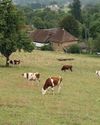
How to Buy a Smallholding in France- Long-time smallholder Lorraine Turnbull looks at the practicalities of moving to rural France
Aspiring smallholders are continually thwarted by the prices of smallholdings and property with land located within the UK. Even the humblest croft in Scotland comes with a substantial price tag and conditions which would make even an adventurous wannabee consider carefully. But all is not lost. For those willing to take the adventure of a lifetime, there is always Europe, and one of the most popular places is France.

Meet the Bournemouth goats and their supporters
These capricious animals are hard workers preserving the natural habitat
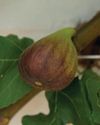
Still warm enough to sit outside with a Pizza
Henrietta Balcon uses fresh figs to create an unusual dish at Harvest time

Goodbye to the birds of spring and summer
If you look and listen you might be able to see them preparing to leave says The RSPB

Get ready for the colder weather in the warmth of late summer
Claire Waring advises on doing the best to make sure your colonies survive until next spring
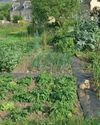
Preparing the Veg Patch for Winter
Lee Senior says, a well-run plot can excitingly continue to produce good quality, tasty, fresh food for much of winter
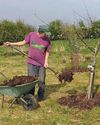
Time to prepare to plant your orchard
Wade Muggleton, smallholder and author of The Orchard Book, shares his practical experience so you can create your own fruit collection
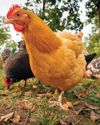
Choosing feed for the autumn
As autumn approaches, Joanna Palmer, nutritionist at the Smallholder Range, offers advice on choosing the right feed to support your adult birds through their annual moult and ensure your young birds grow and finish well at this time of the year.
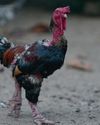
Vet advice from an experienced poultry vet
Reflecting on how much the humble hen has helped people world wide plus advice on stopping the scourge of red mite

Give your hens some support
Paul Donovan looks at the right and wrong ways of handling birds